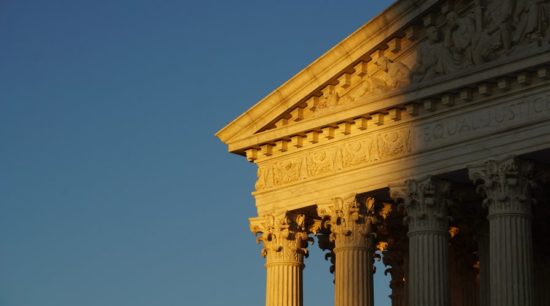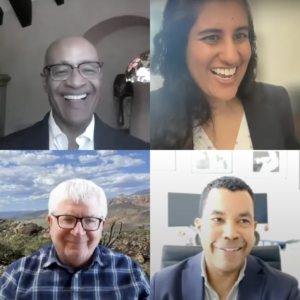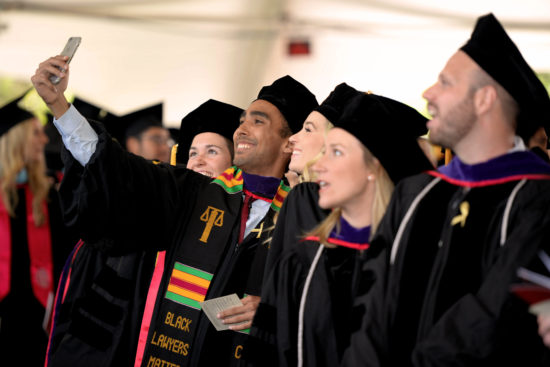After Affirmative Action: SLS Professors Analyze Students for Fair Admissions Decisions
Race-based affirmative action has been an imperfect yet important element in generating diverse college classes since the 1960s. Affirmative action finds its roots in Executive Order 10925 issued by President Kennedy in 1961 to mandate that affirmative steps be taken to ensure diverse applicants are employed without regard to race. The spirit of this order was taken up by universities who wanted to actively combat the effects of segregation in the 60s by using race to defeat the effects of racism.

Until recently, using explicit racial focus to increase minority representation in historically white colleges and universities has mainly been upheld by the Supreme Court. In 1978, Regents of the University of California v. Bakke confirmed that race can be used as “one factor amongst many.” 25 years later in 2003 this standard was upheld in Grutter v. Bollinger, where the Court decided that a holistic non-mechanical approach to admissions can consider race as a factor. However, this legal framework was recently upended in the 2023 landmark decisions of Students for Fair Admissions v. University of North Carolina and Students for Fair Admissions v. President and Fellows of Harvard College. In these cases, the majority decided using race as a factor in university admissions schemes was unconstitutional.
On June 30, 2023, Stanford Law Professors Easha Anand, Richard Ford, and Michael McConnell discussed the reasoning, tensions, and impact that the recent decisions will have on U.S. college admissions. The event was co-sponsored by the Stanford Center for Racial Justice and the Stanford Constitutional Law Center and moderated by Professor Ralph Richard Banks. A recording of the conversation can be viewed here.
Professor Anand first led the conversation by addressing Chief Justice John Roberts’ majority opinion. Anand characterized the narrative of Roberts’ opinion as combating the “inherent folly of trying to derive equality from inequality.” Chief Justice Roberts conveyed affirmative action as an extension of the Jim Crow style racism that was ended by Brown v. Board of Education. Roberts believed “eliminating racial discrimination means eliminating all of it.” Consequently, he outlined three reasons for overturning the affirmative action admissions schemes in question.
First, Justice Roberts was unconvinced that the educational benefits of diversity could be measured and therefore argued that a school’s use of affirmative action failed to establish a compelling government interest. Second, Roberts believed race cannot be used as a “stereotype or a negative,” and the zero-sum game of college admissions makes a preference for one applicant a negative for others. Finally, the Chief Justice argued affirmative action is ineffective as there was no end in sight after years of implementation.
The discussion then turned to how Justices Neil Gorsuch and Clarence Thomas provided complementary concurrences to Justice Roberts’ reasoning. Professor Ford outlined that Justice Gorsuch completed a textual analysis of Title VI of the Civil Rights Act of 1964, which covers programs and activities receiving federal financial assistance, to explore another argument for overturning affirmative action. Title VI is traditionally seen as the avenue that extends the Equal Protection Clause analysis to private institutions. However, Justice Gorsuch approached this concept by textually analyzing the statute to arrive at his view that affirmative action should also be prohibited under Title VI, offering another independent basis for the Court’s holding. At its core, Justice Gorsuch argued that a plain reading of Title VI outlaws the racial preferences of affirmative action.

Professor McConnell subsequently explained that Justice Thomas’ opinion added a historical complement to the Chief Justice’s opinion. Justice Thomas used his opinion to explain his view of the colorblind history and intention behind the 1866 Civil Rights Act and the 14th Amendment: both were created to outlaw racism of all kinds in preference of a colorblind legal system. As affirmative action treats people differently based on race, it should be outlawed under the historical intention of the 1866 act.
The above opinions represent a stark contrast with the dissenting opinions. Professor Anand provided an overview of three points from Justice Sonia Sotomayor’s dissent, which are important to note. Sotomayor argued that the compelling government interest—student body diversity—is the same as the interest that was upheld in 2003. Further, “college admissions were no less zero-sum 20 or 50 years ago than they were today.” Finally, she argued that past defendants “articulated no firmer endpoint” for the need for affirmative action “than did Harvard and UNC today.” In sum, every argument that Chief Justice Roberts “leveled at these two programs is an argument that did not carry the day in one of these prior cases.”
Chief Justice Roberts noted that while race-based affirmative action is overturned, the effects and importance of race can be considered in a personal statement. However, Professor Anand expressed three primary reasons why this “cold comfort” will lead to long-term difficulty. First, the ruling removes admissions officers’ post-application tool to remedy overrepresentation of similar people. Second, distinguishing between conferring special consideration because of race (prohibited) and consideration because of an applicant’s articulation of hardship that intersects with race is “razor thin.” Finally, given the preference of admissions offices for objective proxies to avoid reviewer subjectivity, Anand expressed worry that this Court’s attempt to “root out stereotypes” will inevitably invite “gamesmanship, [where] people will be coached on how to package their race” in their essays.
During oral arguments, the attorneys for Students for Fair Admissions indicated that hypothetically tailoring affirmative action to the descendants of enslaved people would still be an impermissible proxy for race. However, Professor Banks challenged that the social creation of race may also be understood as a proxy for being a descendant of slaves and having the associated race-based disadvantages. Given the ambiguous stance of the Court, Professor McConnell characterized such a hypothetical case as potentially “easier to defend” because it more clearly defines the beneficiaries of affirmative action relative to the prior system. The Freedmen’s Bureau was cited as the closest historical parallel.
Heartened by the enthusiastic engagement from the Law School and the broader Stanford community in attendance, the panelists concluded the discussion by outlining their key takeaways. As Professor Anand reflected on the dissenting opinions, she highlighted the possible utilization of historical remedy as a more stable rationale for race-based affirmative action programs. She expressed her hope for continued exploration into other justifications. Regarding universities’ stated commitments to diversity, Professor McConnell urged for these institutions to more thoroughly evaluate the dimensions of diversity that they intend to consider in admissions, including ideology and religion. Professor Ford’s concluding remarks broadened the discussion beyond policy and identified the historical ideal of integration as a productive way of understanding the motivations behind affirmative action. Rather than wholly deferring to the Supreme Court’s understanding of racial justice—like the diversity rationale—he invited us to “not limit our notions of what’s possible” and to “hang on to that broader sense of what are the possibilities and necessity of racial justice.”

While a level of uncertainty remains as the nation enters a post-affirmative action world, the policy lessons gained from the states that already banned affirmative action offer a preview into its immediate impact and the effectiveness of colorblind policies. The case of the University of California system is particularly illuminating and representative, given the numerous initiatives it has piloted since the 1996 passage of Proposition 209. Most recently, it has removed ACT/SAT testing requirements and altered the order in which application elements are reviewed. Some campuses like UC Berkeley have increased their outreach programs to target families who have little to no college experience and students attending underperforming schools.
Since 2001, the University of California system has additionally pioneered the Eligibility in Local Context program, guaranteeing that the top nine percent of each participating California public high school’s graduating class will be designated UC-eligible. The vehement pursuit of diverse approaches is in recognition of there being no one panacea to attaining student diversity. In spite of the multi-pronged approach, the percentages of underrepresented minority groups at selective campuses like Berkeley have not recovered to pre-1996 representation levels. As demonstrated by Berkeley’s continued brainstorming of solutions for a decades-old issue, an endless imagination, intentional experimentation, and commitment to self-evaluation will and must pave the way forward.
